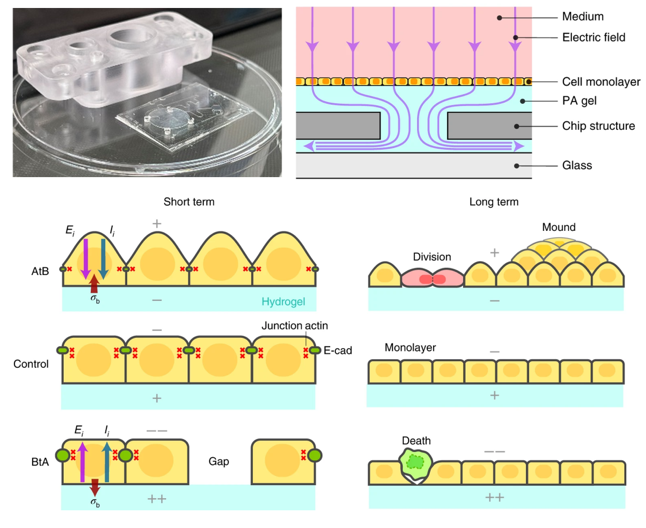1) How bioelectric parameters govern cell and tissue behaviour?
Tissues such as epithelia possess bioelectric parameters including the trans-epithelial electric potential difference (TEPD), but their biological functions are poorly understood. We recently showed that reinforcing the TEPD of cells in vitro with an external ion current flux strengthens adherens junctions and junctional actin, and maintains a stable monolayer architecture. In contrast, perturbing the TEPD lead to disruption of contact-inhibition of proliferation and formation of ectopic live mounds reminiscent of tumor-like structures. How cells sense and respond to electric fields/ion currents in the short and long term are still unclear. This project aims to find ways to modulate and measure bioelectric parameters such as ion flux, membrane potential and tissue potential through genetic, pharmacological and physical means, and study how important homeostatic parameters such as cell-cell junctions, polarity, proliferation, and death are regulated. Links between mechanobiology and bioelectric pathways will be scrutinized.



2) Physiological relevance of bioelectricity in non-excitable tissues
Although ion currents and membrane potential differentials have been shown to be involved in wound healing and developmental processes, the importance of bioelectricity in non-excitable cell types have largely been investigated using simple cell lines and in vitro systems. This project aims to uncover the relevance of electric potentials/ion currents using more complex systems such as organoids, ex vivo cultures, and small animal models, paving the way toward a better understanding of their physiological relevance.
3) Tissue engineering with mechanical/electrical stimulations
Small molecules and transcription factors are used in the in vitro programming and engineering of cells for cell therapy. Biophysical cues also accompany cell fate changes, tissue morphogenesis, and adult tissue maintenance. Creating in vitro microenvironments that mimic physiological biophysics/biochemical conditions promises to lead to better cell/tissue engineering strategies. Along these lines, static mechanical cues such as cell confinement and cell substrate stiffness have been shown to regulate stem cell fate. To better manipulate cell/tissue fate, this project aims to use ion currents to control cell dynamics and cell-cell interactions towards producing functional tissues.


